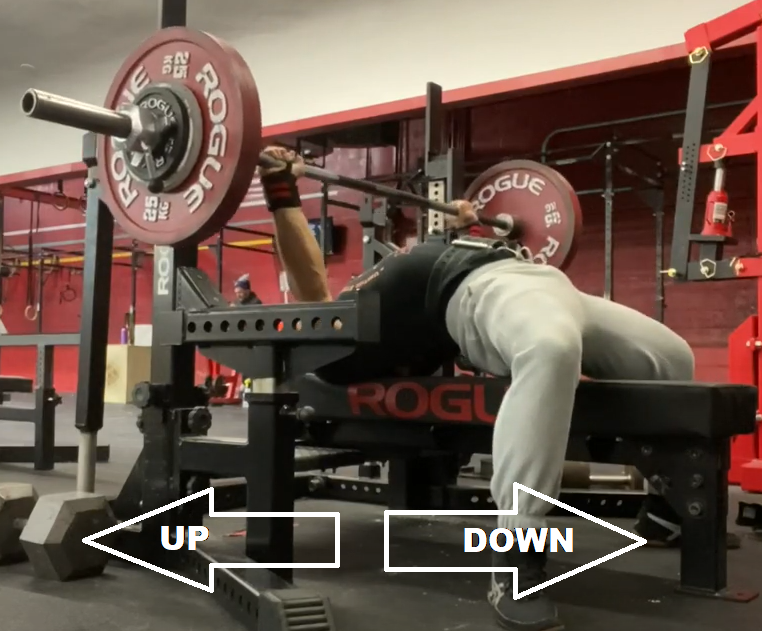Let’s go over the specifics of the close grip bench press.
There are a few key reasons why we use the close grip bench press:
To make the bench press more difficult.
Using a close grip increases the range of motion, which makes the lift more challenging by increasing the moment arm (the horizontal distance between the bar’s position at lockout and the touch point on the chest).To build tricep strength.
The triceps are a major contributor to overall bench press performance. A close grip bench press allows us to better isolate and target the triceps within a compound movement, making it a useful tool for improving pressing strength.
Common Issues to Watch For:
Grip Width:
One of the most common errors is setting the hands too close. At the bottom of the press, we want the forearms to be vertical. If the grip is too narrow, the forearms will angle inward, placing unnecessary stress on the wrists, elbows, and shoulders.Elbow Control:
Proper elbow positioning is critical. We want to avoid flaring and maintain vertical forearms throughout the entire range of motion—both on the descent and the press. Having strict standards around elbow control will help develop the triceps and reinforce proper joint mechanics during the bench press.In some cases it’s extremely difficult to have elbow control during a close grip bench press and in this case we might want to, reduce the amount of weight on the bar, Slow the Rep speed down or even perform pauses at specific locations during the range of motion to ensure proper elbow position.
Summary:
The close grip bench press is an excellent variation for increasing difficulty, targeting the triceps, and improving elbow control. Keeping an eye on grip width and forearm position will ensure you get the most benefit from this lift while minimizing risk.
Hopefully this helps clarify some common questions and issues you’ve had with the close grip bench press!


